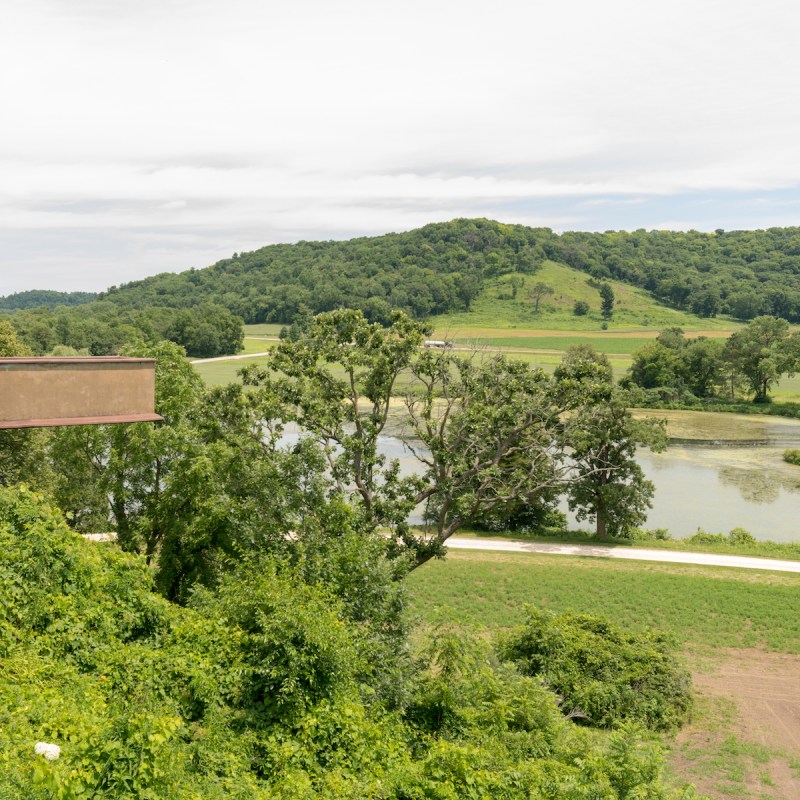
Beyond the beer and cheese curds, Wisconsin also serves up a healthy portion of history, especially for visitors willing to look beyond the state’s larger cities. That history is perhaps best seen — and felt — in spots that you might not normally consider as you plan a road trip or vacation. Make no mistake, the Badger State’s smaller hidden-gem towns are worth checking out — each for different reasons, all harkening back to the past.
Videos by TravelAwaits
Here are 10 of our favorite Wisconsin hidden gems you might want to add to your travel list.

1. Berlin
Fur Trading On The Fox River
Once hailed as the fur and leather capital of the world, Berlin’s history started with the French fur traders who settled along the Fox River hundreds of years ago. The town, located about 90 minutes north of Madison, boasts the Huron-Broadway Street District, with many stores and buildings dating back to the 19th century. The Nathan Strong Park Historic District is where you’ll find block after block of well-cared-for Victorian homes. A walking tour is the best way to take in all these treasures.
The town’s historical society maintains several museum buildings, including the Berlin Bottling Works, which is certainly one of the most unique in town. Originally a carriage house, the building takes you back in time through displays of print shop and ice harvesting equipment. One more fun fact: The first cranberry operations in the state happened here!

2. Baraboo
Big Top History
As it is near the famed Wisconsin Dells and surrounded by beautiful bluffs, fans of the circus routinely flock to the town of Baraboo. You might want to consider a visit as well! The famed Ringling Brothers called Baraboo home and had their winter quarters here through 1918. The young brothers grew successful and eventually joined forces with the Barnum & Bailey show, creating the globally recognized Ringling Bros. and Barnum & Bailey Circus.
Not only did the Ringlings call Baraboo home, but over the years, several other circuses were headquartered here as well. You can learn about all of them at Circus World, the town’s museum dedicated to the big top. There are a whole host of exhibits, wagons, and other treasures to explore here, but check ahead before your trip to see if it’s open, as it does shut down during the winter.
Baraboo’s charming Courthouse Square boasts numerous shops, boutiques, and cafes, and outdoor enthusiasts will love Devil’s Lake State Park, which provides terrific opportunities for kayaking, hiking, and canoeing.

3. Chippewa Falls
Brewing Tradition And Amazing Architecture
One of the newest additions to the Wisconsin Register of Historic Places, the West Hill Residential District in Chippewa Falls is recognized for its architecture, history, and preservation. The neighborhood includes more than 100 charming homes built in architectural styles popular during the 1800s. The jewel of the district is the stunning Cook-Rutledge Mansion that demonstrates the grand style of the lumber barons in days past. The city also offers a walking tour through its well-preserved historic downtown area, a great way to better get to know all that Chippewa Falls has to offer.
When you’re done exploring, plan to take a tour of, and quench your thirst at, Jacob Leinenkugel Brewing Company. This family-owned beer heaven has been headquartered in Chippewa Falls since 1867 and is a popular stop for visitors.

4. Pepin
Little House On The Prairie Fame
If you’re like me, you grew up on Laura Ingalls Wilder’s accounts of her life on the prairie, either by reading her books, watching the TV series based on them, or both. Turns out this iconic American figure was born in tiny Pepin, Wisconsin. The town is tucked right along a naturally occurring lake in the Mississippi, about 75 miles downriver from Minneapolis. Pepin is actually the official starting point of the Laura Ingalls Wilder Historic Highway, which links sites pivotal to her life and work across the United States. The museum named for her in Pepin explains her early life in the Big Woods. Just to the north of town, fans can visit the Wayside Cabin, a replica of the small home where Laura was born, built on the same land where the original once stood.
There’s more to Pepin besides all that great Little House history; it’s also home to many unique restaurants, boutiques, and some of the best water activities in the area.

5. Cambridge
Interesting Immigrant Roots
Cambridge, located just a short drive east from Madison, transports its visitors back to the Victorian era with its old buildings and rich Scottish and Norwegian roots. The village’s downtown is filled with sweet shops, boutiques, and cafes, while the area countryside features gorgeous lakes, wineries, and an extensive parks and trails system.
One of the highlights in town, the Cambridge Historic School Museum, was recently renovated. The 1906 building is now complete, with exhibits and artifacts documenting Cambridge’s early immigrant experience. There are also military and veterans exhibits, and much more.
Fun Fact: Cambridge was the hometown of Arthur Davidson of Harley-Davidson!

6. Spring Green
Architecture And Arts
The small Wisconsin town of Spring Green is known globally for its most famous son, legendary architect Frank Lloyd Wright. He designed and built his gorgeous Taliesin home just outside of town in the early 1900s. Today, people from around the world flock here to tour the estate and learn about its complicated history. As one might expect, a strong artist community has also built up in the town, with several galleries and studios located there.
Theatre buffs will also have the chance to see live performances during a visit; Spring Green has several venues including the American Players Theatre, a professional repertory theater. It was founded in 1979 and continues to be one of the most popular outdoor classical theaters in the nation. There are also fun shops, boutiques, cafes, and taverns to check out as well.

7. Prairie Du Chien
Firsts In Wisconsin History
The state’s second oldest city, Prairie du Chien is home to the first five nationally designated landmarks in the state. Wisconsin roots run especially deep here. There’s St. Feriole Island, where the city’s earliest activities took place, including an extensive fur trade. Later, Americans fought the British in the Battle of Prairie du Chien; it was the only War of 1812 battle fought in the state. Then there’s the first Fort Crawford outpost; that’s where treaties with area Indigenous tribes were signed and where army surgeon Dr. William Beaumont conducted experiments that are still the basis of our understanding of the human digestive process.
In addition to the military history, Prairie du Chien’s homes, some privately owned but others open for public tours, are architectural gems also worth exploring.
8. Shullsburg
Underground Adventures
Little Shullsburg is Wisconsin’s third-oldest city, packed with rich lead mining history dating back to 1827. The first prospectors to arrive for the lead boom that year were called “Twenty-Seveners,” and many of them eventually made their way further west to California for the gold rush in 1849.
Make your first stop here the visitor center; on weekends, volunteers can give you self-guided tour information and answer your questions. History buffs will love checking out all of the beautiful homes and buildings in town, as well as heading underground to the Badger Mine and Museum; it’s the only primitive lead mine open for public viewing in the U.S. Here, you’ll get a firsthand look at what life was like for the miners. You’ll also learn about how mining practices of the time led to Wisconsin’s nickname, “the Badger State.”

9. New Glarus
Little Switzerland
It doesn’t get more Swiss (outside of Switzerland, of course!) than the southern Wisconsin town of New Glarus. Settled by a group of about 100 Swiss pioneers in 1845, the land here reminded them of the alpine forests of their homeland. More followed from eastern Switzerland, and New Glarus began to grow and thrive.
Today, the town still celebrates its history and heritage, readily visible in its chalet-style architecture and kept alive in customs, music, and traditions. New Glarus boasts two museums, including the Swiss Historical Village Museum, which traces the town’s growth and further explores its deep Swiss roots. New Glarus also hosts several famous ethnic festivals and is home to a wealth of specialty shops and restaurants serving savory Swiss food. They even have a yodeling club in town!
No visit here would be complete without a stop-off to the New Glarus Brewery, where beer lovers know to enjoy a pint (or two!) of Spotted Cow.
10. Mineral Point
Mining Town Turned Artist Colony
Like other small Wisconsin towns, Mineral Point has a fascinating mining history. What makes it different is its deep Cornish roots. The miners who came here in the 1820s had also worked underground in their native southwest England, and their cultural influence can still be seen all over the village.
In 1935, two preservationists began restoring the miners’ old stone bungalows and log houses, naming the site Pendarvis. The efforts grew to a larger scale in the 1960s and 70s when artists and craftspeople began restoring additional historic buildings.
Now a quaint artists’ colony, Mineral Point embraces its past and has done much to ensure visitors can learn from the effort.
